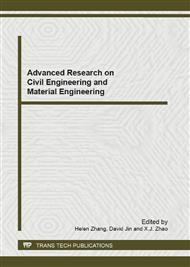[1]
J. A. Duffy, J. Phys. C: Solid State Phys. Vol. 13 (1980), p.2979.
Google Scholar
[2]
J. A. Duffy, J. Solid State Chem. Vol. 62 (1986), p.145.
Google Scholar
[3]
R. R. Reddy and Ahammed Y. N. Cryst. Res. Technol. Vol. 30 (1995), p.263.
Google Scholar
[4]
R. R. Reddy, Y. N. Ahammed, K. R. Gopal and D. V. Ragharam, Opt. Mater. Vol. 10 (1998), p.95.
Google Scholar
[5]
R. R. Reddy, Y. N. Ahammed, K. R. Gopal, P. A. Azeem, D. V. Ragharam and T. V. R. Rao, J. Magn. Magn. Mater. Vol. 192 (1999), p.516.
Google Scholar
[6]
J. A. Duffy and M. D. Ingram, J. Am. Chem. Soc. Vol. 93 (1971), p.6448.
Google Scholar
[7]
J. A. Duffy and M. D. Ingram, J. Non-Cryst. Solids Vol. 21 (1976), p.373.
Google Scholar
[8]
F. G. K Baucke and J. A. Duffy, Phys. Chem. Glass Vol. 32 (1991), p.211.
Google Scholar
[9]
A. J Easteal and D. J. Udy, Phys. Chem. Glass Vol. 24 (1983), p.107.
Google Scholar
[10]
V. Dimitrov and S. Sakka, J. Appl. Phys. Vol. 79 (1996), p.1736.
Google Scholar
[11]
V. Dimitrov and S. Sakka, J. Appl. Phys. Vol. 79, (1996), p.1741.
Google Scholar
[12]
X. Y. Zhao, X. L. Wang, H. Lin and Z. Q. Wang, Phys. B Vol. 403 (2008), p.2450.
Google Scholar
[13]
X. Y. Zhao, X. L. Wang, H. Lin and Z. Q. Wang, Phys. B Vol. 403 (2008), p.1787.
Google Scholar
[14]
L. L. Velli, , C. P. E. Varsamis and Kamitsos, Phys. Chem. Glasses: Eur. J. Glass Sci. Technol. B Vol. 49 (2008), p.182.
Google Scholar
[15]
X. Y. Zhao, X. L. Wang, H. Lin and Z. Q. Wang, Physica B Vol. 392 (2007), p.132.
Google Scholar
[16]
X. Y. Zhao, X. L. Wang, H. Lin and Z. Q. Wang, Physica B Vol. 390 (2007), p.293.
Google Scholar
[17]
X. Y. Zhao and X. L. Wang, Phys. Chem. Glasses: Eur. J. Glass Sci. Technol. B Vol. 50 (2009), p.332.
Google Scholar
[18]
X. Y. Zhao, X. L. Wang, H. Lin and Z. Q. Wang, Physica B Vol. 283 (2010), p.1668.
Google Scholar
[19]
J. C. Phillips, Phys. Rev. Vol. 166 (1968), p.832.
Google Scholar
[20]
J. A. Van Vechten, Phys. Rev. Vol. 182 (1969), p.891.
Google Scholar
[21]
B. F. Levine, Phys. Rev., B Vol. 7 (1973), p.2591.
Google Scholar


